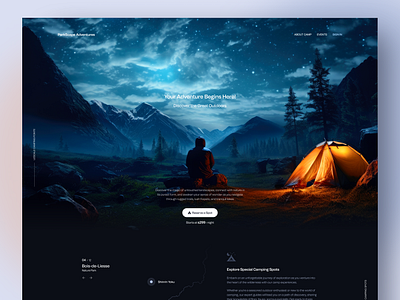Exactly How Efficient Internet Design Can Increase Customer Experience and Conversions
In the progressively competitive electronic landscape, reliable internet design plays a pivotal function in enhancing user experience and driving conversions. As we discover the key elements that add to effective web design, it ends up being apparent that the impact on user complete satisfaction and conversion rates is profound.
Relevance of User-Centric Style
In the world of website design, prioritizing user-centric style is vital for producing efficient electronic experiences. This technique focuses on comprehending the requirements, choices, and habits of customers, making sure that digital user interfaces are instinctive and available (Web design). By incorporating customer responses into the layout procedure, internet designers can craft experiences that resonate with their target market, eventually leading to increased engagement and satisfaction
User-centric design highlights use, which is essential for keeping individuals and reducing bounce prices. When users can browse a site effortlessly, they are most likely to discover its material and exchange clients. Furthermore, a user-centered strategy fosters depend on and trustworthiness, as individuals feel that their requirements are valued and resolved. This not only improves their experience yet additionally encourages brand loyalty.

Crucial Element of Efficient Design
Effective format serves as the backbone of user-centric web layout, converting customer needs into aesthetic structures that assist in interaction. An efficient format prioritizes web content via a clear power structure, guiding customers' eyes to crucial details. This power structure is typically established using spacing, color, and dimension, making sure that critical components stick out.
One more crucial element is making use of whitespace, which protects against overcrowding and enhances readability. Web design. Whitespace permits elements to take a breath, making the general design appear cleaner and easier to browse. Additionally, uniformity in design elements, such as shades and font styles, fosters familiarity and trust fund, allowing users to navigate the site with higher ease
Grid systems can likewise be very useful, providing a structure that straightens content practically and aesthetically. This positioning enhances the individual experience by developing an organized aesthetic flow. Adaptability in layout-- like responsive style-- ensures that websites execute well across different gadgets, catering to varied user preferences.
Ultimately, a reliable format not just captivates individuals but additionally urges them to engage even more deeply, inevitably satisfying and driving conversions business goals. By concentrating on these crucial elements, developers can create layouts that resonate with users and enhance their general experience.
Navigational Ideal Practices
Clear and instinctive navigation is essential for boosting customer experience on an internet site. A well-structured navigating system permits individuals to discover info rapidly, which directly influences their complete satisfaction and possibility of conversion - Web design. Carrying out a hierarchical structure is important; utilize categories and subcategories that logically group related content, making it easier for visitors to discover
Guarantee that menus, switches, and web links preserve harmony in style, color, and positioning across all pages, over here providing individuals with an acquainted framework as they browse. Instead of generic terms, opt for clear tags that accurately show the content, assisting individuals in making informed decisions.

Mobile Responsiveness and Availability

Access, on the various other hand, focuses on making internet sites functional for people with handicaps. This includes sticking to guidelines such as the Internet Web Content Availability Guidelines (WCAG), which resolve problems like shade comparison, message size, and key-board navigating. By carrying out these criteria, web developers can produce comprehensive experiences that satisfy a wider target market, consequently improving user engagement and complete satisfaction.
Additionally, mobile responsiveness and access not just improve customer experience but additionally favorably effect online search engine positions. Online search engine focus on mobile-friendly and easily accessible sites, making them most likely to show up in relevant search outcomes. Investing in these aspects of web layout not just fulfills customer demands yet additionally adds to overall service success through increased visibility and improved conversion rates.
Gauging Success With Analytics
Tracking customer communications and actions via analytics is essential for evaluating the success of a website. By leveraging tools such as Google Analytics, businesses can collect critical information that reveals how users involve with their website. Metrics such as bounce rates, ordinary session period, and conversion prices offer insights visit the website into customer actions and can highlight locations for enhancement.
Comprehending user demographics and web traffic sources even more enhances an internet site's efficiency. This data enables web developers to customize content and layout elements to much better meet the demands of their target audience. Additionally, tracking details customer journeys helps determine potential traffic jams in the conversion funnel, making it possible for services to optimize their website design accordingly.
A/B testing various design elements can supply concrete proof of what resonates with users, enabling for informed choices based on real-world efficiency. Ultimately, determining success with analytics not just improves customer experience but also drives conversions, making sure that web style initiatives align with company goals.
Final Thought
In final thought, effective website design plays an essential function in improving individual experience and driving conversions. By focusing on user-centric concepts, carrying out crucial format aspects, and making certain instinctive navigating, websites can engage a varied audience. Mobile responsiveness and access further add to a smooth communication for all users. Eventually, measuring success through analytics enables continuous enhancement, making certain that layout approaches continue to be lined up with individual demands, thereby cultivating organization development and success.
In the increasingly affordable digital landscape, effective internet layout plays a crucial function in enhancing customer experience and driving conversions. By integrating user feedback right into the layout procedure, web designers can craft experiences that resonate with their target audience, eventually leading to increased involvement and fulfillment.
Ultimately, the value of user-centric design exists in its ability to develop meaningful interactions that drive conversions and foster long-term connections with customers, making it a crucial element of effective internet style strategies.
Eventually, gauging success through analytics not just boosts individual experience yet also drives conversions, making certain that web layout efforts align with organization objectives.In final thought, efficient internet layout plays a crucial role in boosting user experience and driving conversions.